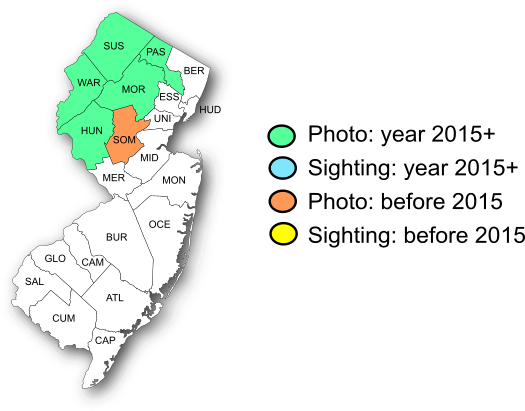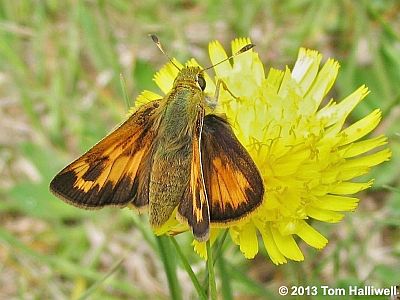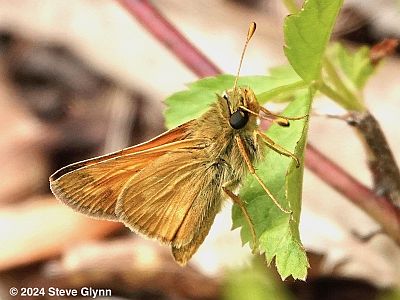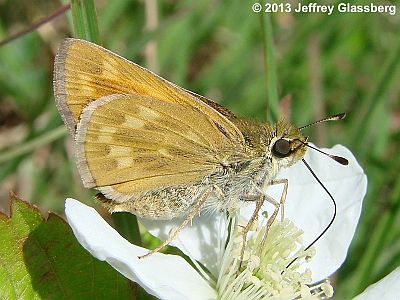New Jersey Butterfly Club
A chapter of the North American Butterfly Association (NABA)
Indian Skipper
Hesperia sassacus
Identification: Very small—FW 0.6". Above: Male FW has a large orange field setting off a narrow but conspicuous stigma and a dark semicircular mark toward FW apex, a dark trailing border with irregular inner edges, and two small, isolated orange spots toward wingtip. HW has large central orange patch with relatively narrow, irregular dark borders. Female FW appears darker brown, with more-prominent dark markings in the orange field, and inner edges of dark trailing border are noticeably concave. Orange patch on female HW more sharply defined, crossed by dark veins, and with concave dark edges. Below: HW of both sexes yellowish- to brownish-orange with a paler chevron that is rather poorly defined in the male and more boldly defined in the female. Chevron spots have concave outer edges. Central spot of chevron projects rearward. Similar skippers: On Long Dash the central chevron spot on HW below does not project rearward, and orange patch on HW above is divided in two by a vague dark band.
NJ Status and Distribution: Resident. Has become rare and local in North Jersey; now found only at higher elevations in Hunterdon, Passaic, Morris, Warren, and Sussex counties.

Habitat: High-elevation grassy openings with nectar sources.
Flight Period: Flies only in spring, with one brood in May-June. Extreme dates: 5/6—6/30.
Caterpillar Food Plants: Various grasses, such as Little Bluestem Grass (Schizachyrium scoparium), panic grasses (Panicum), crabgrass (Digitaria), and others.
Overwintering Stage: Caterpillar.
Good Locations: Catfish Fire Tower (on AT), Kaiser Trail/AT to Raccoon Ridge, Mountainside Park, Ramapo Mt. SF.
Comments: Likes to nectar at the flowers of blackberry (Rubus) shrubs. Numbers have declined markedly, apparently owing to climate change and to loss of field habitat to invasive shrub species.



